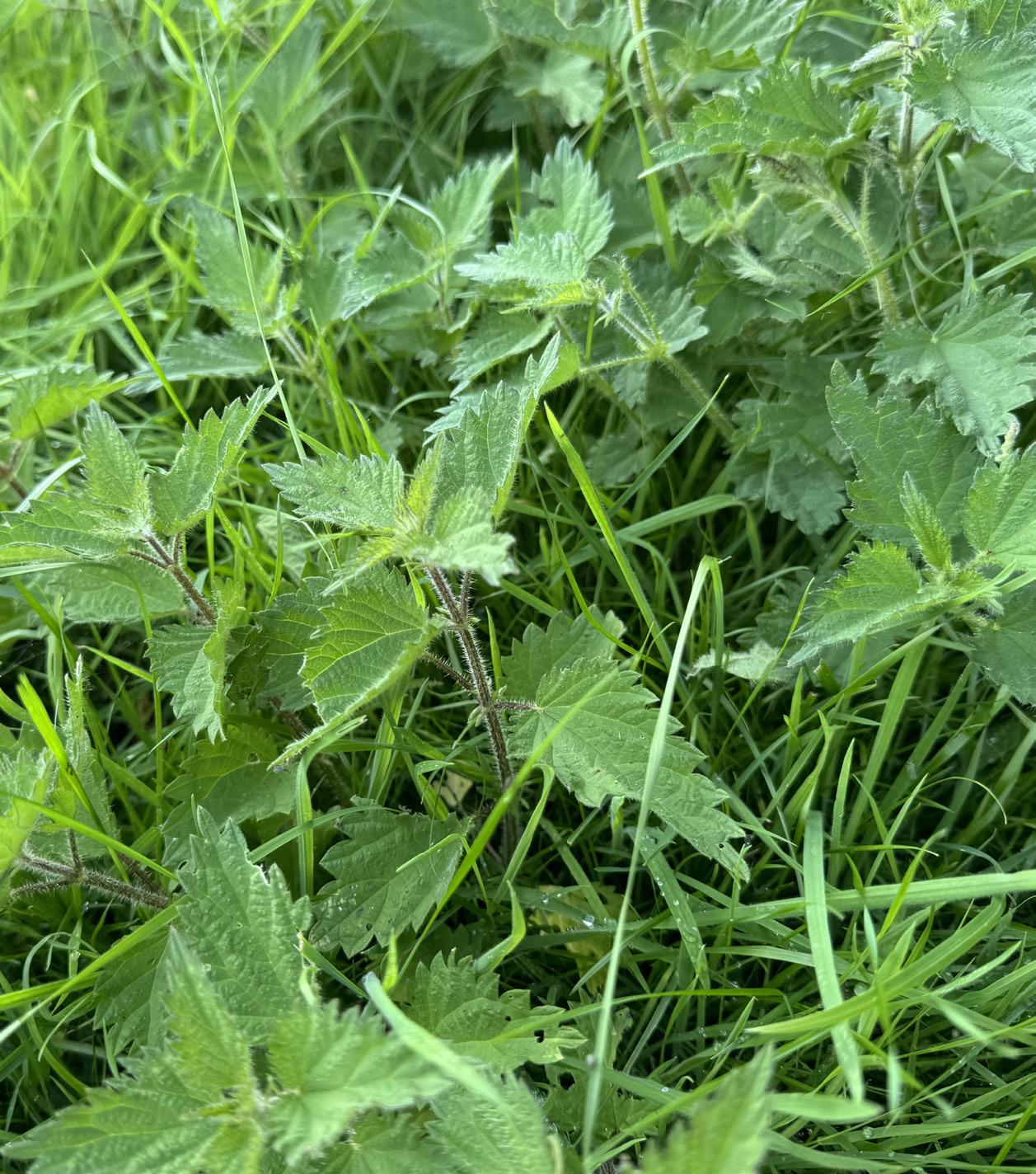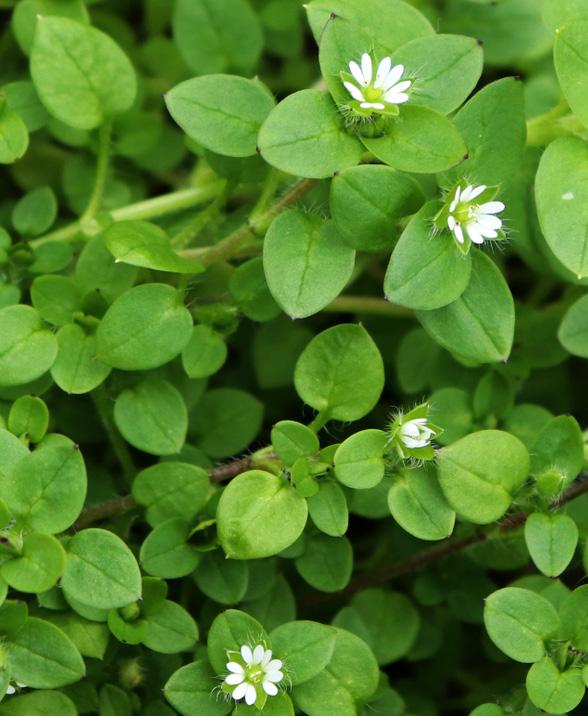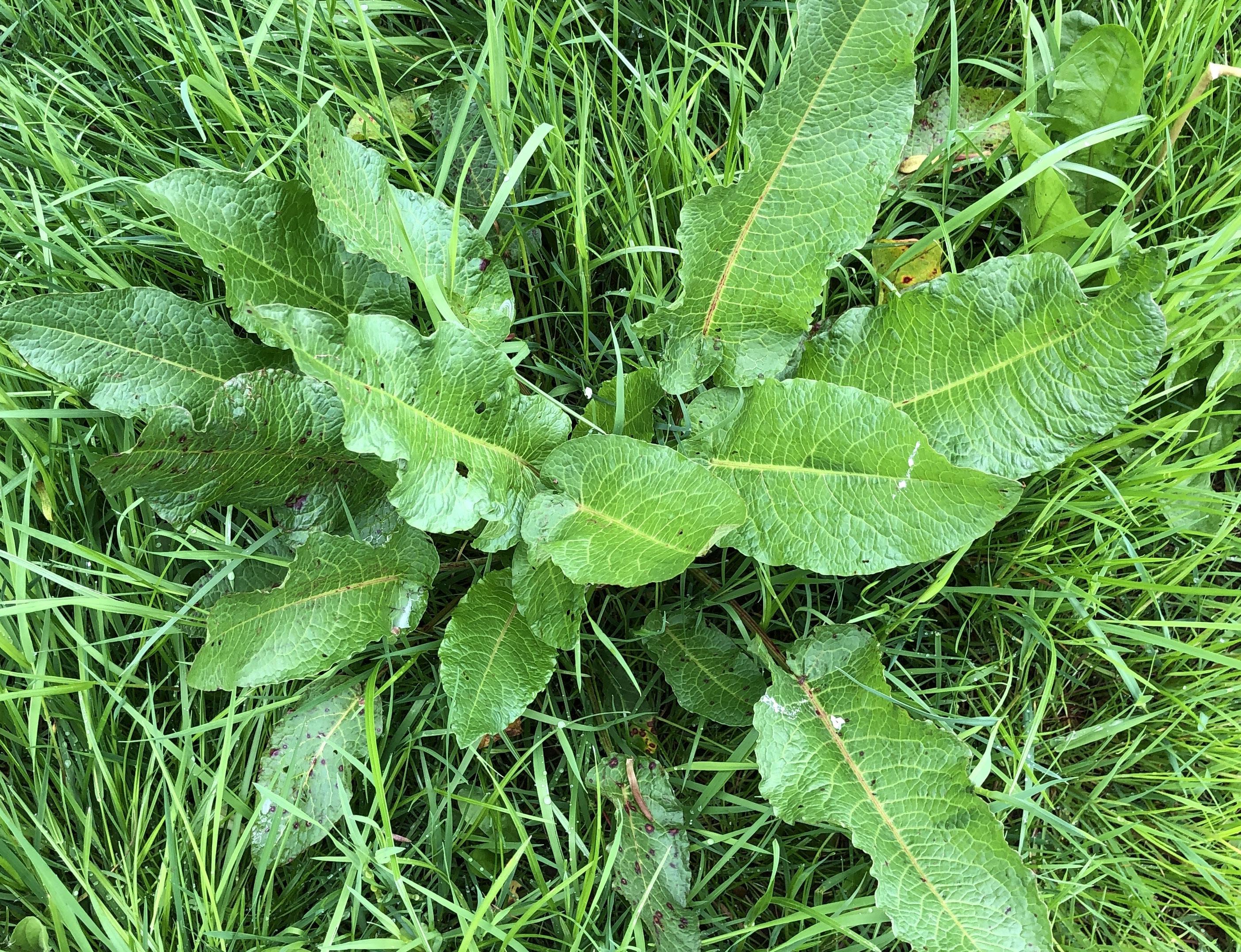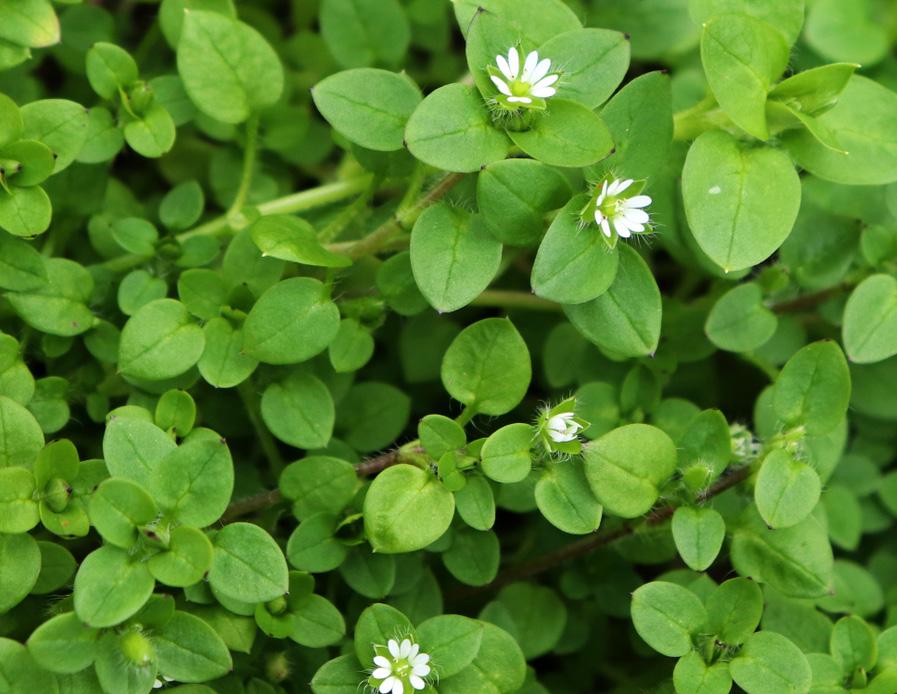Grassland product range



Protecting and getting the most out of grassland is vital for maximising grassland productivity, stock numbers and profitability.
Weeds in particular can compete very fast for space, light, soil water, soil nutrients and reduce grassland productivity quickly if left to establish.
Ensuring a well-planned, long-term approach to grassland management and weed control is essential to keep productivity high.
GRASSLAND WEED CONTROL: TACKLING PROBLEM WEEDS.
Weed control in grassland is a key factor in successful grassland farming and herbicide spray applications should be applied safely, according to the product label and taking care for the environment with a sustainable approach.
www.claytonpp.com

IMPROVE YOUR GRASS YIELDS
Bad or severe weed infestations can easily incur yield losses of 10-20% in fields.
IMPROVE YOUR SILAGE QUALITY
Weeds such as docks and thistles in particular detrimentally affect silage quality.
KEEPING YOUR GRAZING STOCK HEALTHY
Weeds like thistles can spread diseases such as Orf in sheep and lambs.
IMPROVE GRASSLAND UTILISATION
Sheep and cattle often avoid grazing close to or around weed patches (especially thistles) which reduces effective grassland utilisation over time.
PROLONG THE PASTURE LIFE
Weed control ensures less productive weeds and other grasses are kept out and the target grass ley species mix is competitive so pasture renewal is less frequent.

Why control thistles: Creeping thistle when established has extensive roots underground and competes very strongly with grass, and as a perennial it grows from seed or portions of root. Spear thistle can spread to cover over a square metre of ground within two years so is a serious threat to grassland productivity., and as a biennial growing from seed it is less obvious in its first year but can spread rapidly in its second year.
Timing of control can be difficult as thistles can appear at different times and overgrazing and poor soil nutrition can also both encourage growth of thistles.
Control options and application tips:
Herbicides* containing active ingredients such as fluroxypyr, triclopyr and clopyralid provide useful treatment options. Where thistles are at different growth stages in the pasture, topping 2-3 weeks before spraying is advisable.
Why control docks: Docks thrive in fertile grassland pastures but compete for valuable space and only provide two-thirds of the feed value of grass from the same area. One dock plant can produce up to 60,000 seeds which can remain viable for many years.
Open swards which can result from poaching, over-grazing or winter kill provide space for docks to establish and infest fields. Docks establish more easily on grazed land and in silage systems and respond well to nitrogen fertiliser.
Control options and application tips:
Herbicides* containing active ingredients such as fluroxypyr and triclopyr provide excellent treatment options. Docks are best controlled at the rosette stage when actively growing and not under stress, and leaves are a healthy green.


Why control nettles: Nettles infestations very quickly spread out and occupy valuable pasture as they grow, making pasture unpalatable and reducing the effective grazing. As a perennial weed they can grow from both seed or root portion so are very invasive.
Poached areas, bare soil, field margins or open swards are ideal areas where nettles will establish.
Control options and application tips:
Herbicides* containing active ingredients such as fluroxypyr, triclopyr and clopyralid provide good treatment options. Nettles are best controlled when young and actively growing at 15-25cm high. Once established, nettles are difficult to control by a single treatment, so regular treatments may be required.
Why control chickweed:
As the most widespread, common annual weed of grassland, its very rapid growth means it competes strongly with grass leading to significant yield losses especially when establishing new grass leys. Often a significant problem in new reseeds, it can also be troublesome in established grassland as it can quickly grow and colonise bare soil areas.
Control options and application tips:
Herbicides* containing active ingredients such as fluroxypyr, triclopyr and clopyralid provide good treatment options. Ensure good, quick establishment of new swards and that seedbeds are clean and weed free. Use of a heavy roll can also help fast establishment when sowing new grass leys to achieve good soil to seed contact.


Weeds controlled:
TARGET WEEDS
Rate of use (L/ha)
Broad-leaved dock, Curled dock 2.0
Optimum time of application
At the rosette stage up to 200 mm tall or across
Apply Clayton Docker at 2.0 litres/ha in 300 to 400 litres of water as an overall treatment in the autumn or spring for the control of docks. Use the higher volume of water where the weeds are large at the time of application and where the grass is dense.
Application timing of Clayton Docker is crucial for good control and must be made when the weeds and grass are actively growing to ensure good weed control and minimal check to the grass.
Docks should be treated in the rosette stage and within the size given above. It is important that there is sufficient leaf area for uptake of the herbicide. This is particularly true on well-established docks which will have an extensive tap root, but which early in the spring or soon after cutting may only have a few small leaves.
If the grass (and hence the weeds) has been cut for conservation hay or silage, or has been grazed, leave for 2 to 3 weeks to allow sufficient regrowth to occur before spraying.
To allow maximum translocation of Clayton Docker to the roots do not cut grass for 28 days after application.
On large well-established docks and where there is a large reservoir of seed in the soil a further control programme in the following year may be required.
Maximum Individual Dose: 2.0 litres product per hectare
Maximum Total Dose: 2.0 litres product/hectare/annum
Latest Time of Application: 7 days before grazing or harvest
Other Specific Restrictions: Livestock must be kept out of treated areas for at least 7 days after treatment.
Grass and weeds must be actively growing to ensure good weed control and minimal check to the grass.
Do not spray in drought, very hot or very cold weather. Control may be reduced if rain falls within 2 hours of application.
Do not roll or harrow grass for 10 days before or 7 days after application.
Clover will be killed or severely checked by application of Clayton Docker. Clayton Docker is safe to established grassland. Very occasionally some yellowing of the sward may occur; this is transient and quickly outgrown.
Exclude livestock during treatment and do not allow livestock to graze treated grassland for at least 7 days following treatment.
Where ragwort is present, users should consult the Code of Practice on How To Prevent The Spread Of Ragwort. Ragwort plants sprayed with this herbicide are more palatable with higher levels of toxins.
Animals should be excluded from treated areas until any ragwort has completely recovered or died and there is no visual sign of the dead weed.
Do not include any treated ragwort in hay or silage crops.

Maximum Individual Dose: 6 ml product per litre of water (see Other Important Information)
Maximum Number of Treatments: One per year
Latest Time of Application: 7 days before grazing or harvest
The following weeds will be controlled by an application of Clayton Grazer at a rate of 60 ml of product in 10 litres of water (6 ml product in 1 litre of water). ONLY apply Clayton Grazer using a hand held sprayer.
Crop Time of application to crop
Common Nettle Spray when actively growing but preferably before flowering (normally up to mid-June).
Broad-leaved dock, Curled dock
Treat in the spring when the docks are in the rosette stage up to 25 cm high. On large well established docks, or where there is a high reservoir of seed in the soil, a second application the following year maybe required.
Creeping Thistle
Bramble, Broom and Gorse
Spray when actively growing but before flowering spikes are 15 cm high. Application of Clayton Grazer at flowering or during seeding is likely to produce reduced levels of control.
Spray in June-August when actively growing but before plants begin to senesce in the autumn. It is essential that, particularly with large bushes, all the foliage is thoroughly wetted or incomplete kill may result.
The weeds should be thoroughly wetted with the spray solution but spraying until “run-off” will decrease activity. The use of flood jets is recommended to prevent drift. Care should be taken to avoid local overdosing.
If the grass has been cut for hay or silage or grazed leave for 2-3 weeks to allow sufficient regrowth to occur before spraying. Grass and weeds must be actively growing to ensure good weed control and minimal check to the grass.
To allow maximum translocation of Clayton Grazer to the roots do not cut grass for 28 days after application.
Applications must not be made outside the period of 1st March to 31st October.
Do not apply Clayton Grazer onto or around manure or other compost heaps.
Do not roll or harrow grass for 10 days before or 7 days after application.
Do not spray in drought, very hot or very cold weather.
Clover will be killed or severely checked by an application of Clayton Grazer but it is safe to grass. Very occasionally some yellowing of the sward may occur; this is transient and quickly outgrown.
Do not sow kale, swedes, turnips or grass mixtures containing clover by direct drilling or minimum cultivation techniques within 6 weeks of applying Clayton Grazer.
Clayton Grazer residues in plant tissues (including manure and digestate) which have not completely decayed may affect succeeding susceptible crops e.g. peas, beans and other legumes, carrots and Umbelliferae, potatoes and tomatoes, lettuce and other Compositae. Do not plant susceptible autumn-sown crops (e.g. winter beans) in the same year as treatment with Clayton Grazer. Where susceptible crops are to be planted in the spring do not apply Clayton Grazer later than the end of July of the previous year. Following good agricultural practice ensure that plant remains have completely decayed before planting susceptible crops.
Do not use any plant material treated with Clayton Grazer for composting or mulching.
Do not use manure from animals fed on crops treated with Clayton Grazer for composting or mulching.
In hot conditions, vapour drift may occur, making it particularly important to assess the risk to neighbouring vegetation.
Take extreme care to avoid drift onto crops and nontarget plants outside the target area.
Do not apply directly to or allow spray drift to come into contact with agricultural or horticultural crops, amenity plantings or gardens, ponds, lakes, or water courses. All conifers, especially pine and larch, are very sensitive to spray drift.
Exclude livestock during treatment and do not allow livestock to graze treated grassland for at least 7 days following treatment. Where ragwort is present, users should consult the Code of Practice on How To Prevent The Spread Of Ragwort.
Ragwort plants sprayed with this herbicide are more palatable with higher levels of toxins. Animals should be excluded from treated areas until any ragwort has completely recovered or died and there is no visual sign of the dead weed. Do not include any treated ragwort in hay or silage crops.

Clayton Flurry contains fluroxypyr, a translocated herbicide taken up by the leaves. It is essential that the target weeds have fully emerged before application and that good spray cover of the weed foliage is achieved when weeds are small and actively growing under warm moist conditions.
Ensure grass is vigorous with growth unaffected by frost, pests, disease, nutrient deficiency or moisture stress before treatment. Do not treat waterlogged grassland or grassland under drought stress.
Exclude livestock during treatment and do not allow livestock to graze treated grassland for at least 7 days following treatment.
Where ragwort is present, users should consult the Code of Practice on How To Prevent The Spread Of Ragwort. Ragwort plants sprayed with this herbicide are more palatable with higher levels of toxins.
Animals should be excluded from treated areas until any ragwort has completely recovered or died and there is no visual sign of the dead weed.
Do not include any treated ragwort in hay or silage crops.
Maximum Individual Dose: 2.0 litres product per hectare
Maximum Total Dose: 2.0 litres product/hectare/annum
Latest Time of Application: -
Other Specific Restrictions: Livestock must be kept out of treated areas for at least 7 days after treatment.
Maximum Individual Dose: 0.75 litres product per hectare
Maximum Total Dose: 0.75 litres product/hectare/annum
Latest Time of Application: -
Other Specific Restrictions: Livestock must be kept out of treated areas for at least 7 days after treatment.
Crop Weeds controlled (up to size) Time of application to crop Use rate (L/ha)
Newly sown grass leys
Common chickweed (5cm) In early autumn when grasses are well established and tillered and weeds are actively growing.
Established grassland Pre-flowering broad-leaved Dock and Common Nettle (top growth reduction)
Bramble, broom
Broad-leaved Dock: In spring at rosette stage but may be applied 14-21 days after cutting when weed foliage has regrown. Repeat if necessary the following year.
Common nettle: up to mid-June when actively growing.
Spray in June – August when actively growing but before plant begins to senesce in the autumn. It is essential that particularly with large bushes all the foliage is thoroughly wetted or incomplete kill may result.
0.75L/ha in 150400L/water/ha
2.0 L/ha in 300 –400L/ha water. For spot treatment use 30 ml/10 L water
2.0L/ha in 300 – 400L/ ha water.
Apply with tractor mounted/trailed sprayer in 150-400 litres of water per hectare using a minimum 300 l/ha on established grassland, to give good coverage of the target weeds. The higher volume is recommended on dense crops to ensure good coverage and penetration. Apply as a medium quality spray.
Where overall spraying is not justified, small weed infested areas or individual weeds may be spot treated by knapsack sprayer or hand-lance connected to a powered conventional hydraulic sprayer. Preferably use a flood jet to avoid spray drift.
ANNUAL WEEDS
Black bindweed 6 TL 6 TL
Bristly ox-tongue
Charlock 2TL
Chickweed Flowering
Cleavers Flowering
Corn chamomile
Corn marigold
Cranesbill
Dead-nettle 4TL 4TL
Bindweed (field)
Bracken
Bramble
Broom
Burdock
Buttercups
Cinquefoil
Clover/Trefoil
Coltsfoot
Fat-hen 2TL 2TL Cow parsley
Fool’s parsley
Forget-me-not 4TL Flowering
Fumitory 2TL 2TL
Groundsel 2TL
Hemp-nettle Flowering
Himalayan balsam
Knotgrass 2TL 2TL 4TL
Mayweeds 2TL
Nettle (small) 100mm
Black nightshade 6TL
Orache
Pale persicaria
Poppy
Redshank 2TL
Scarlett pimpernell
Shepherd’s purse 2TL
Speedwells 2TL
Spurrey
Wild radish 2TL
Yellow rattle
RATES
IMPORTANT: The above weed susceptibility table and weed control ratings are based on various information sources including label reference, farm experience, anecdotal and limited data and trials reference. The weed susceptibility table is for guidance only and is not a recommendation. As such use of the products listed for control of nonlabel weeds is the sole responsibility of the user.
Daisy (common)
Daisy (ox-eye)
Dandelion
Docks 200mm
Gorse
Ground elder
Ground Ivy
Hawthorn
Hemlock
Hogweed
Horsetail
Knapweed
Lesser celendine
Mallow
Medick (black)
Mugwort
Nettle (common)
Old man’s beard
Plantain (greater)
Plantain (ribwort)
Ragwort
Rosebay willowherb
Rushes
Self-heal
Silverweed
Sorrel
Thistles
Verch, tare
Yarrow
Yellow/Flag Iris
Rosette
